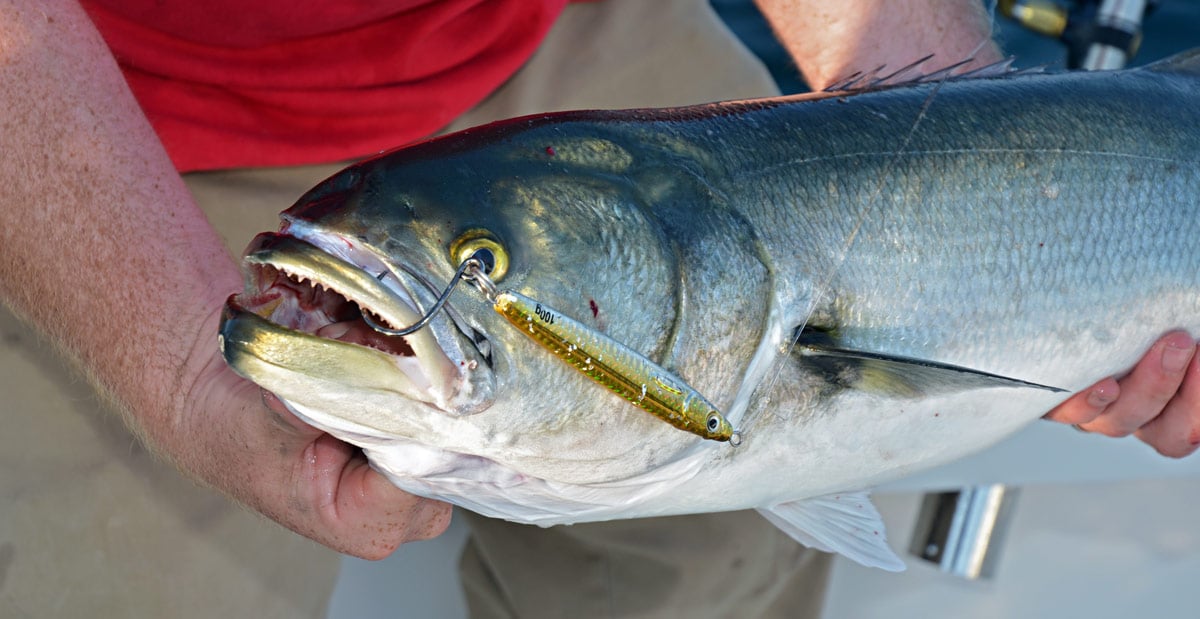Metal lures are some of the most traditional, popular and productive offerings for stripers, bluefish and albies on the Cape. They are available in a wide variety of weights, shapes and finishes. What they all have in common is flash – the look of silvery baitfish. Some have single hooks covered in bucktail while others sport an unadorned treble hook. They cast like bullets and no experienced Cape angler would be caught without at least a few in his lure bag in case wind and waves become an issue.
They range in weight from a fraction of an ounce up to 6 ounces or more, although the larger versions may put too much stress on the rod and the line. The most popular weights range from one to four ounces.
The shapes of the various metal lures determine much of the way they will swim. Long, thin metals tend to move in a straight line with very little side to side motion while more oval-shaped models with tapered thickness are made to dart from side to side like a panicked baitfish. Some are “spoons” with a concave body and these offer the most erratic movement without any imparted action from the angler.
In most cases though some movement of the rod during the retrieve is required for best results. Metal lures (except for those made of tin) sink quickly but it’s always best to wait a few seconds before beginning the retrieve. A shiny, flashy metal lure sinking can be irresistible to stripers. In most cases a metal lure should swim a few feet beneath the surface for best results.
Although some of the newer models have elaborate and quite natural looking finishes most of the more traditional metals such as those from Acme Tackle and Hopkins are not exact replicas of baitfish; rather their effectiveness comes from their ability to flash. Because of this they are extremely effective in big surf or whenever the water is roiled and dirty.









